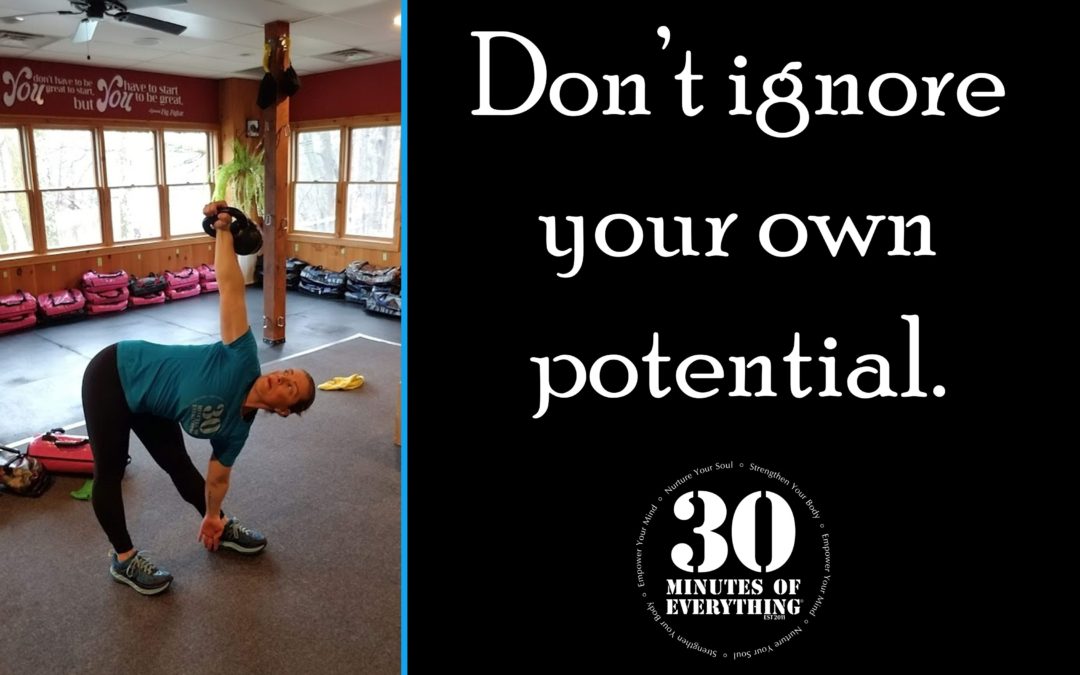Let’s talk about how exercise can help the symptoms of perimenopause: hot flashes, night sweats, mood swings, brain fog, bone loss, etc. It can! Not all people respond the same to changes in their hormones and not all people respond the same to exercise so this is general information. You have to find what works best for your body – that takes trial and error. In general, exercise:
- Improves mental health: Exercise lowers stress, improves moods, enhances cognitive function, and curbs anxiety. It can also help boost self image and self esteem.
- Increases energy: Feeling fatigued can be a symptom of perimenopause for some women. Regular exercise can boost your energy levels by increasing blood flow and oxygen to your brain and working muscles. It also secretes endorphins, which can improve your energy.
- Improves physical health: Perimenopause can be associated with a gain in body weight and negative changes in bone & muscle mass. Exercise can help maintain or regulate body weight as well as improve muscle mass & strength. Weight bearing activities help build muscle & bone mass.
- Improves Sleep: Exercise can help improve the quality of your sleep & more hours sleeping.
- Help reduce hot flashes: Some may wonder how this can be since exercise makes you hot and sweaty? Over time, exercise reduces your core body temperature and the threshold at which you start to sweat. This means you cool off faster, even if you’re perimenopausal. Exercise also helps your body regulate temperature more efficiently.
Yay that exercise may or may not help perimenopausal symptoms! So vague and anti-climactic, right? Only because everyone is different can we not clearly state that exercise is guaranteed to help every symptom. You have to find what works for you. For example, what exercise works best for you? For me, that has changed over the past few years. First it was heavy strength training then it was more walking and less heavy lifting and now it’s both. Your body will let you know what is best for you, you just have to listen to it. Let me tell you about a few options.
- Strength training: You know I’m a huge fan! Not just because it helps me emotionally & mentally, but as a woman, I really do need it. Strength training helps strengthen bones and muscles. By doing that it helps increase our metabolic rate, reduce fall rates, improve confidence, and I could go on and on. The benefits are significant for women as we age because without it we become frail.
- Aerobic training: Walking, do it and do it often. Walking helps strengthen your heart, circulatory system, and improve mood and sleep. There are points in our life that we need the lower intensity leisurely walk (as a stress reliever & gentler movement) and there are times we need the brisk, vigorous interval training walk. Both are beneficial. Swimming is great for cardiovascular health, but it’s not weight bearing so it’s of no benefit to bones. You want to choose weight bearing when possible. Non-impact will also be kinder to joints over time (i.e. walking vs. running or jogging).
- Meditation & Yoga: Aah, relaxation for your body and mind. We need to downregulate our system more often and yoga and meditation help with that. They also reduce stress and improve sleep.
In our program, we do interval circuits and I program it to change up the intensity and make the 8-weeks progressive. You gain the benefits of strength and cardiovascular training. What you do on your off days from 30MoE is important too. Research recommends 3-4 days of strength training and 3-4 days of cardiovascular training per week. How does all that fit into a week? Let’s say you strength train 3 days/week then you walk 3 days/week. You can do them on the same day or off days. You do want one day/week where you are resting. That can be real rest and no exercise or it can be light movement, such as a leisure walk, mindful slow yoga, etc. More research is recommending strength training for women’s health than ever before. In the 80s it was all about cardio. Not until the late 80s, early 90s did research start studying strength in women (but postmenopausal women). And not until recently has science started examining exercise during perimenopause. One big reason for the lack of research previously has been because a woman’s changing hormones confounds the results. Researchers weren’t able to control for the variable hormones in women so they just avoided studying women during these years. Finally, researchers are starting to study women during this phase to examine the variability. More information is now available, but still more is needed. The more information we have, the more we know, the healthier we are.
Experiment with what types of exercise works best for you in your phase of life.

